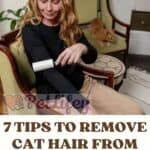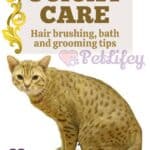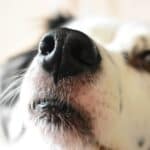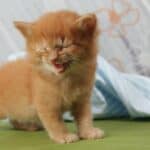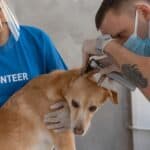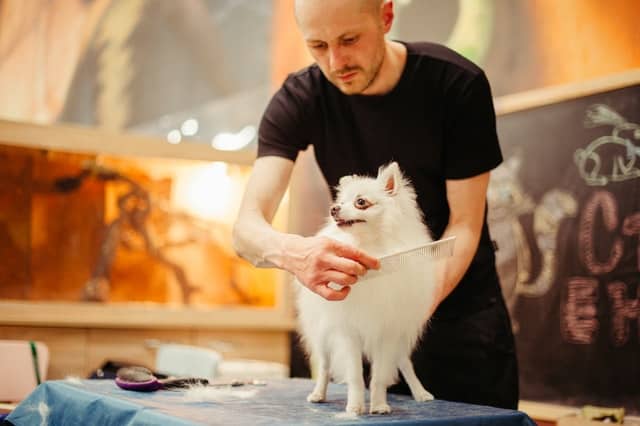
Dogs love their owners madly, of that there is no doubt. But when they see you with a comb, they sometimes run away! It doesn’t matter if you want to bathe them or just give them a brush – they run away constantly. If your dog does not allow himself to be combed , do not miss our advice.
In this article we will reveal some practical tricks that will allow you to overcome the problem, once and for all. Maybe you use a brush that is too stiff, or you do it by pushing too hard or at an inappropriate time. Whatever the reason, we will reveal how to do it if the dog does not allow himself to be combed .
What to do if the dog does not let himself be combed?
Brushing is an essential part of dog hygiene , because thanks to it, dead hair is eliminated from the coat, which remains clean and shiny, improving its appearance . Furthermore, it also allows for the removal of dead skin cells or what we would call the scalp.
For these reasons, you will need to do everything possible to persuade your dog to let himself be combed. How to do? Simple: you just have to keep reading.
Get used to the comb
If your dog is afraid of the comb , you will have to get him used to this object . For example, you can place him on the floor and surround him with his favorite cookies or treats. Let him come over, sniff him, and then look for his snacks .
It is possible that once you have eaten all the prizes, you will start playing with the scallop. Don’t force him , let him get close and look for him first. Leave him on the ground , because he must become another of his toys, so that his presence is no longer a source of fear.
Are you using a suitable accessory? Maybe the comb in your hand is not good for your dog. Buying just any dog brush doesn’t mean it fits all dogs . Indeed, you will have to choose it based on the size of the dog, the type of hair and the length.
To find the most appropriate one, talk to your vet , who will surely be able to give you the correct instructions. You think that an inadequate comb can damage your dog’s skin and this could be why he runs away every time he sees it.
Comb it at the right time
Once you have found the right brush, don’t make the mistake of chasing the animal to be able to comb it . Hide the comb near your chair or where you usually sit. Then, sit back and wait for your four-legged friend to approach.
In this position, talk to him calmly, caress him and let him relax. When it is totally calm, take the comb out of its hiding place and start using it, softly. Before placing the teeth of the comb or brush directly , you could also simulate its movement, simply using your open hand.
Do you know how a dog combs his hair?
Your dog may not want you to comb it because you don’t do it properly. Perhaps, you do it too slowly for fear of hurting him or , on the contrary, perhaps you push excessively .
Depending on the dog’s coat, it will need to be brushed in one way or another. Bear in mind that long-haired pets may have annoying knots and brushing too hard will surely cause pain.
Eliminate the knots first
A dog that has knots in its coat can suffer greatly if you try to untangle it too abruptly . It is best to look for the various knots with your hands and untie them one by one with the help of a thinner comb.
If they are excessively tangled, we recommend using scissors. In extreme cases, when your dog’s fur may have been neglected for months, shearing may be necessary .
Use conditioners and softening products
Whether you brush it only after a bath or even every day, in pet shops you will find various products that are very useful to comb the dog’s hair more easily . They are used to make the comb slide better and make this activity more enjoyable.
It is known that some tasks, especially those related to your pet’s hygiene, can be tedious. As you have seen, if the dog does not allow himself to be combed, with a little patience and putting these simple tips into practice, you can do it without problems.
How to choose the brush to comb your dog
Brushing your furry friend is not just a necessary action to take care of his fur. It can become a time to deepen your relationship , making your pet calm and relaxed. But sometimes it can become a nightmare for both of you if you yank their fur and hurt them. To avoid these inconveniences, the secret lies in choosing the right brush to comb it.
Find out which brush is right for your dog
Just as not all combs are suitable for your hair, not all brushes are suitable for all dogs. You will have to choose the right brush according to the characteristics of your little friend’s coat. This is because it is not the same to comb an animal with long, wavy hair or an animal with short, smooth hair.
Below we recommend the most suitable brush for your dog , to show him a healthy and shiny coat, but also to guarantee him a serene and pleasant combing session .
Remember that, although it may seem like a minor issue, any doubts you have on the subject, you can and should consult a veterinarian .
The brush suitable for combing your dog must be chosen according to the characteristics of its coat. This way, in addition to keeping it healthy and shiny, you will make your four-legged friend appreciate the grooming sessions.
The best options for combing your short-haired dog
If your dog has short hair, you will need to use a rubber bristle brush or glove, just to remove excess hair without injuring the skin or pulling off too much hair.
You have to consider that, in this case, two or three weekly combing sessions – taking into account the amount of hair it sheds – are sufficient, since it does not accumulate a lot of dirt and will not have knots.
Short-haired breeds are considered, for example:
- Chihuahua
- Dalamata
- Boxer
- Doberman
The right brush for a long-haired dog
Long-haired dogs are, of course, the ones that require the most attention when it comes to grooming. The accumulation of dirt, knots and the loss of a large amount of hair are the order of the day. For this, you will have to comb your dog daily.
If your pet has delicate skin – as does Yorkshire – the ideal is to use a two-way brush. First you should use the side with the rounded bristles to untie knots and remove dead hair. Then, the side with the hard bristles, to obtain shine and softness.
In the case of animals with thicker and less sensitive skin, a wire-tipped brush can be used first.
The best option if your dog has intermediate coat
There are also dogs with intermediate coat. For example:
- German Shepherd
- Border Collie
- Golden Retriver
In these cases, you should subject the pet to a minimum of four grooming sessions per week with a fine, very dense wire-bristled brush.
This object is ideal for removing all the dead hair that these dogs accumulate, which is usually a lot. This way you will have a hairless home and reduce possible allergic episodes.
What brush to use with a curly-haired dog?
If your dog has curly and very thick hair, you will need a special comb with thick and separate metal tips to be able to untie the knots without hurting them and avoiding their future formation.
Dogs such as Poodles or Bichon Frisé need to be brushed daily to maintain a clean, strong and healthy coat.
Although they are animals that do not shed much hair, they are characterized by the large amount of knots and, moreover, by the accumulation of mud, sand and other substances that stick to their fur when they go out for a walk.
A well-groomed and happy dog
Surely, using the right brush, the hairstyle will become a pleasant and relaxing moment for your furry friend. So while you make sure you remove the dirt, dead hair and untie the knots, your dog will be relaxed, content and will not be tugged on the skin .
Tips for brushing a water dog
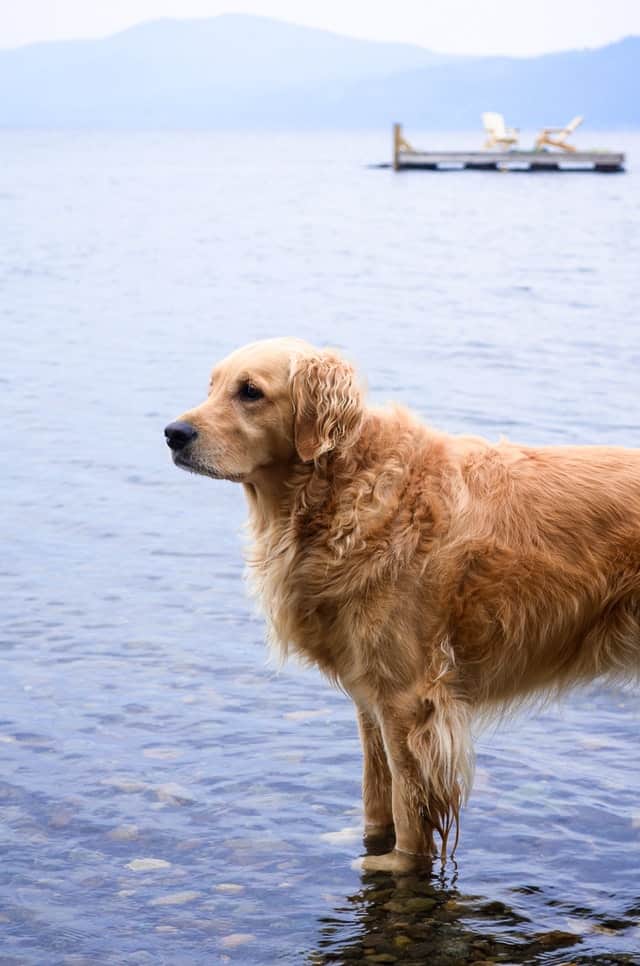
Water dogs are characterized by a thick and at the same time difficult to manage coat. Today we will give you some tips on how to brush the coat of this type of dog.
Hygiene and grooming of a water dog
To bathe a water dog, a specific shampoo and conditioner must be used. It is said that this type of dog’s special coat is much better cleaned if you take it to the beach first. After a couple of days, rinse it to remove the saltiness and wash it with the shampoo you usually use.
Clipping greatly affects a water dog’s coat care. It can be shorn in three different ways:
- Uniform clipping. It consists in making sure that the hair of the animal has the same length on all sides of the body. In this way, it is more difficult for knots to form, and makes the dog dirty and smell less. It should not be shortened more than one and a half centimeters approximately, as the coat is a protection against cold and heat.
- Work shearing. It involves mowing the areas that are most likely to accumulate dirt, leaves or twigs. This will ensure that the parasites do not settle on these parts of the body. The rest of the coat must be left longer.
- Long clipping. In this type of shearing, the focus is on removing the multitude of hair found in the area of the anus, in the intimate areas and in the belly, to prevent the accumulation of residues from causing infections to the dog.
Tips for brushing a wet dog
Before you start brushing a water dog, you need to have everything you need. A common brush or comb is not good. It is best to go to a pet store to purchase a brush that is suitable for the type of coat your dog has.
To prevent knots from appearing, you need to focus on the areas most prone to this problem , such as the chin, legs and abdomen. You should know that if you decide to brush all of a water dog’s coat, the natural strings of their coat will wear out, and this will favor the appearance of knots.
To avoid them, it is important to check that your furry friend has no fleas or ticks. If the animal scratches excessively, the hair cords will open, which will promote the formation of knots. These cords form naturally as the coat grows.
The knots must be patiently untangled from the root to the tips. Wet the fur if necessary. If you can’t do it with your hands, use a knot brush.
If you don’t pay attention, these knots will turn into a huge tangle that you will have to cut.
There are many myths about grooming water dogs. Here are a few:
- Don’t give him a dreadlock hairstyle. Many believe that the best thing is to brush a dog of water and then hand the hair that appears to be made of “ropes”. In this way the mantle already grows naturally, and undoing it with the comb will favor the appearance of knots even more.
- You don’t have to shave them. Many claim that it is necessary to shave the dog’s coat once a year. It is not necessary to do this, as the coat protects the animal from outside temperatures.
- The hair can be brushed unless it is in the shape of ropes.
- You can bathe him, but only using suitable products.
- Do not bathe him in cold water . Although they have a pile that looks like wool, if you wash it with hot water, it won’t swell when dry.
How are dreadlocks formed in dogs?
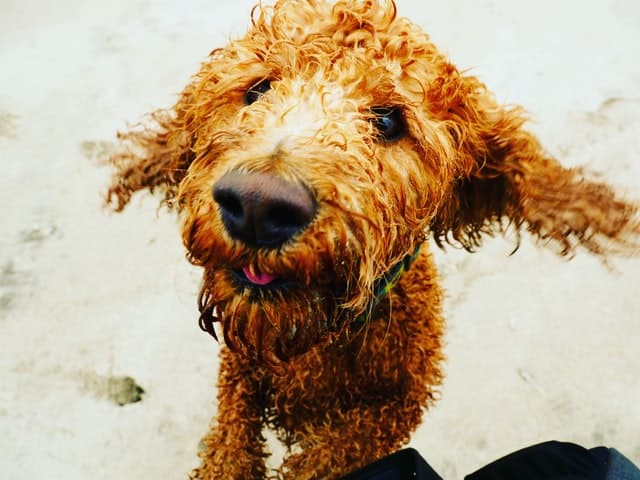
The “dreadlocks” in the fur of dogs are often the result of poor hygiene. And they can lead to several problems.
Although their formation may seem spontaneous, in reality dreadlocks in dogs are the result of inadequate hygiene. Thus, providing breed-specific care is essential to ensure the welfare of these animals.
The tendency of dog hair to tangle is a fact, especially in cases where it is long, curly and thin. However, the formation of dreadlocks in dogs is the result of a combination of dust and a lack of brushing.
The problem presented by these characteristic knots in the animal’s coat goes beyond the mere aesthetic factor , because, in the long term, they can lead to skin infections.
Causes of dreadlocks in dogs
A dreadlock hairstyle is defined as a collection of tangled hair wrapped around itself. Although they can appear on any part of the body, the most frequent possibility is to find them in areas where some rubbing is exerted.
Among the most predisposed areas, we find the neck (due to the presence of the collar), behind the ears, under the chin or armpits or on the lower part of the hind legs.
Furthermore, it has been observed that dogs that like to swim , or those who bathe without being brushed, have a greater tendency to have dreadlocks. The reason is due to the fact that humidity causes the hair to wrap around itself . This phenomenon, combined with the dust and rubbing of the body, leads to the formation of a set of knots.
While any dog can have dreadlocks, dreadlocks are more common in the Poodle , Bichon à poil frisé, Bearded Collie or longhaired Collie.
Furthermore, it should be noted that there are some specific breeds whose coat has a characteristic naturally “cordate” appearance . Some of these breeds are the puli, the komondor and the Bergamasco sheepdog .
How to prevent tangles
The main measure to take to avoid the formation of dreadlocks in dogs is to ensure that they are brushed correctly. For this purpose, not only is it necessary to establish an adequate frequency, which will depend on the type of hair and whether it is a moulting period , but it is also necessary to make sure that the part of the hair we are combing is not limited to that more superficial.
To avoid brushing errors, it is recommended that you ask your vet what type of comb is best to use , as there are different types, from those that look like a rake (for dogs with a double coat of hair) to those that look like a rake. of the “spiked” type.
The use of suitable tools can be accompanied by the use of softeners or conditioners that make it easier to remove knots when the hair is damp. All this must be associated with proper and regular hygiene. The latter must include the cutting of the hair, carried out as often as necessary, by a beautician for dogs.
If, despite the indicated treatments, a dreadlock hairstyle appears, there is a suitable way to eliminate it without having to resort to normal scissors, which could injure the animal . Also, you should avoid brushing the dreadlocks to prevent them from increasing in size and not to cause painful tearing.
Experts agree that the best tool to eliminate them is represented by nail clippers (in the case of small dreadlocks), electric razors or special scissors.
However, before using these tools, it is necessary to have completely isolated the dreadlock from the rest of the dog’s coat. Also, keep a skin disinfectant on hand in case you accidentally get a small cut.
To prevent dreadlocks in dogs from turning into a major skin problem, it is best to eliminate them completely as soon as possible. A particularly tightly packed knot can prevent perspiration, trapping lice or other parasites inside , as well as causing pain and irritation.

